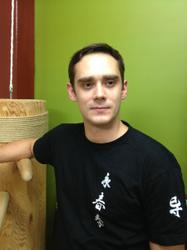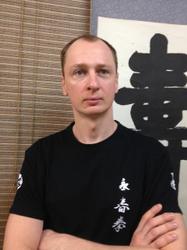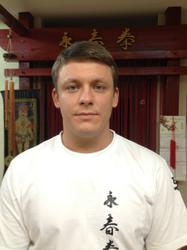Wing Chun Legends
Old and New Wing Chun Legends.
Parts of these stories come from past centuries. Other parts were born in front of our eyes…
The death of Fong Sei Yuk by the hands of Ng Mui
According to the legend, Ng Mui, the mother of Wing Chun, was a Taoist nun and a remarkable connoisseur of martial arts. When her fame reached the Shaolin Monastery, the father-prior invited her to visit and show him her skills. It was a very high honour, which was only bestowed upon a select few. As well as being a very strict Chan-Buddhist cloister, the Shaolin Monastery was a very powerful martial arts scientific-research centre. Apparently scientific interest overcame religious zeal, as the staying of a woman (particularly a servant of another cult) in the monastery was a flagrant violation of Buddhist rules. When Ng Mui arrived in Shaolin, she was challenged to a duel straight away by the then rising star, Fong Sei Yuk. Young but already known as a warrior, he was famous for his excellent technique called iron shirt’, making him invulnerable even to very powerful punches. He was also known for his outstanding physical power. According to the legend, Ng Mui was twice as old as her opponent. She accepted the challenge on the condition that the fight should take place with weapons, rather than with fists alone. The legend is silent on what weapon was used. But if it were to follow tradition, it could only have been the double broadsword (Bart Cham Dao), as the long pole only appeared in Wing Chun much later. Fong Sei Yuk agreed to this condition and died in the fight.
Another version is also popular in South China. The fearless and invulnerable Fong Sei Yuk remained an invincible fighter till his death, which happened at quite an old age. All his life he was afraid of only one person – his mother. Because of her will he began studying martial arts and, under her strict control, became a monk and followed a career as a Wushu Master. Always with the suspicion of disobedience or selfishness, his mother beat her adult offspring with whatever object was near to hand. And, today, Fong Sei Yuk is a synonym of a person who was tied to his mother’s apron-strings for his whole life.
The invention of the Bart Cham Dao double knives by the monk-economists of the Shaolin Temple (according to William Chun, the author of Wing Chun Kung Fu: Butterfly Swords’):
One of the monks’ duties was to provide the monastery household with all necessities, as well as collecting rent from the farmers living on monastery land. Thieves, living in thick forests nearby, knew about this. When the economists, loaded with earth fruits, were returning to the cloister, they used to ambush them, robbing them of their wares. I can clearly picture the scene: the empty-handed and freshly bruised and bumped poor monks returning to the kitchen with the monastery cooks meeting them with gloomy faces! And the tapping of Tsaidao by the huge vegetable knives! Shaolin cooks were infamous for their rough dispositions. They say that, once, more than a dozen bandits broke into the Monastery and began destroying everything around them. A top chef ran towards the commotion branding a wooden spade (with which he used to stir rice in the huge common pot). He single-handedly beat and threw all the attackers outside the gates. So, thanks to the joint efforts of the monks’ brotherhood sitting in the kitchen, Tsaidao was transformed into a new style so that it was possible to carry a couple of knives without attracting attention. They tied them to their legs with rags and hid their handles under their garb. In this way their hands were free to carry sacks and their feet were constantly exercising (each Bart Cham Dao weighs 700-800 grams). Bandits were more afraid when two impressive swords would suddenly appear in front of their faces! Monks didn’t plan to kill – it would’ve been a sin, even if they were overcoming worldly scum influenced by wine, meat and bodily over-indulgence. If still not frightened away, then the brothers had to apply the technique of force on eight joints’ – knees, elbows, ankles and wrists. To tame the spirit having shattered the body was the aim but not to kill. That is what Buddha teaches us.
When Su Fa and Te Quan monks wrote their fundamental work Secret Weapons of Shaolin’, for some reason they didn’t include the double Bart Cham Dao swords in their very detailed list of 220 types of weapon. At the same time, however, there were many other excellent weapons to turn someone towards the true path without any damage, even without spilling any blood (it is rather curious to look at this problem from the point of view of the criminal law of that time: any killing, even of a criminal or the one condemned to the death penalty, was punished very strictly). The term self-defence’ didn’t exist. Serious assault while harming the body was punished depending on the gravity of damage and on the weapon or object used. For example, the use of objects, which were not of household use, was deemed an aggravation. I mean the blunt Tszyan swords (don’t confuse them with the equally sharp Qyan swords – they are written using different hieroglyphs), Byan’ metal lashes, Techi’ iron rulers and especially the double iron rulers Shuanshou Techi (with flat moon like guards).
“The True history of Wing Chun Butterfly Swords” (according to Benny Meng)
According to Buddhist teaching, Benny Meng or Sifu, as he called himself, and the founder of the Wing Chun Museum in Dayton, Ohio, USA, left William Cheung far behind.
According to him, the twin broadswords were intentionally made blunt with only 3 inches sharpened near their edges, as monks were not allowed to harm any living being. He describes the reason for this design, unusual for China, with its guard and hook on the butt (although you could hardly distinguish where the butt was without the blade) as the need to parry the armed opponent’s advances effectively, thereby disarming him. The peace was ruined after the barbaric destruction of Southern Shaolin. From then on, the Secret Society (capital letters were used on Mr. Meng`s command), who fought against the hated Manchu Dynasty, became the major protagonists of Wing Chun and twin broadsword techniques, called Bart Cham Dao, ever since. Atrocities committed by the foreign invaders, however, forced members of the Society to sharpen and alter the Bart Cham Dao. That was the only reason why the weapon came to resemble a big dagger. The rest of the author’s historical accounts of Wing Chun twin broadswords is quite traditional, has no daring conclusions or statements, and, therefore, is not worth retelling. Meanwhile, Sifu Meng`s argumentation is rather unusual. Most of the article is dedicated to the genealogy of his instructor, who came from a family of military descendents. Their direct ancestor was Chu Si (1130-1200), a well-known scientist, who revived Confucianism from the regression it had fallen into. The author doesn’t refer to any other sources other than a summary of the Buddhist monks’ rules. As Sifu Meng’s theory could not hold water (refer to my article about Bart Cham Dao twin broadswords) I would like to turn your attention to the fact that the author published all his survey reports only after the events of September 11th, 2001, when all American citizens developed uncontrollable fear of any piercing or cutting objects.
Origin of the Centre Line Principle (according to Liang Ting)
The Hong Kong Master, Leong Ting, a follower of Yip Man, explains the origin of the Centre Line Principle in the following story. The legendary Yellow Emperor Huangdi had an arch enemy named Chi You. Chi You and some of his henchmen concealed themselves in outlying woods from where they schemed against the Emperor. On several occasions Huangdi sent his troops to hunt down this malicious gang but all searches ended in vain as, unlike the warriors, the bandits knew every path of the dense woods. The Yellow Emperor then commissioned a statue to be sculpted from a block of lodestone. The statue would depict a warrior with one arm extending out ahead of him and would be set on a spike so that it could rotate freely on its axis. When completed, the statue and the high iron spike were placed on a cart and the troops, headed by Huangdi himself, made their way to the woods. The arm of the statue pointed North. The warriors quickly searched the whole area, as Huangdi planned, without any problem. The villains were captured at last.
Using this example, Liang Ting explained the meaning of the Centre Line Principle. It is one of the most important principles in Wing Chun and dictates other disciplines such as a straight body position, attack within the shortest distance, steady advancing, etc. It is important to emphasize that Wing Chun has two notions. The first is called zentralniya liniya’ in Russian, which is almost identical to its English equivalent, centre line’. In the Chinese language there is also chunsumsin’ (chjungsinsyan in Cantonese) and chunsin (chjungsyan). This confuses even the most skilled instructor. According to Liang Ting, the centre line is considered to be chunsumsin, or spinning axis (translated word for word as the heart’s centre line’ or the medullary line) while Joseph Chen defines it as chunsin, i.e. the symmetrical axis that runs top-to-toe along the body (translated as a centre or middle line, to be more exact). Is there a big difference? Ask your instructor. As for me, I prefer to keep my counsel.
Sergey Barchevskiy



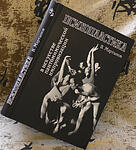

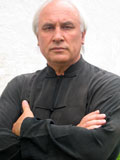 Коан – вопрос к членам Федерации Юн Чун Цюань от президента В.В. Мартынова: «Что Вы сделали для Федерации из того, что не мог бы сделать любой другой за деньги?»
Коан – вопрос к членам Федерации Юн Чун Цюань от президента В.В. Мартынова: «Что Вы сделали для Федерации из того, что не мог бы сделать любой другой за деньги?»
